A decade ago, the challenge of a “clogged” Diesel Particulate Filter (DPF) in Saab diesel vehicles was a significant concern for owners. The inability of the system to complete both passive and active DPF regeneration processes led to a “LIMP Mode” alert, indicating limited performance.
This situation necessitated a forced regeneration using specialized diagnostic tools. Today, we delve into the intricacies of DPF regeneration for Saab diesel cars, sharing firsthand experiences and insights to aid owners in managing and understanding the process.
Table of Contents
Understanding the Saab Diesel Particulate Filter (DPF)
The Saab DPF plays a critical role in reducing harmful emissions by trapping soot from exhaust gases. Initially, early models of Saab diesel vehicles, utilizing the Vauxhall-Opel 2.2 Litre engine, did not feature a DPF. However, the shift to the 1.9 litre Fiat-manufactured diesel engine in 2005 marked the inclusion of DPFs in all subsequent models. These filters are vital for emission control, yet they are known for issues related to the emissions control equipment, including the DPF and the Exhaust Gas Re-circulation (EGR) valve.
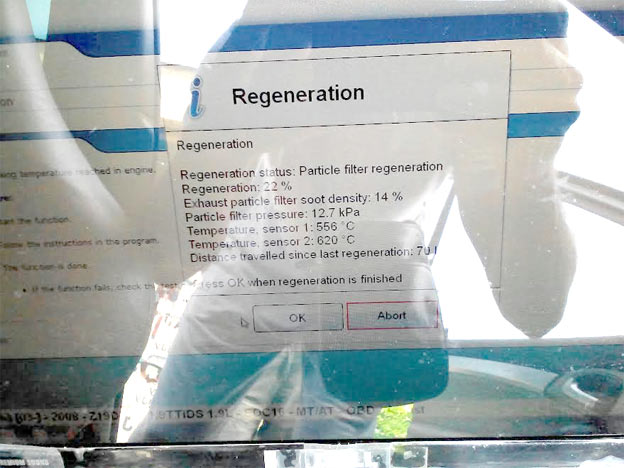
The Significance of DPF Regeneration
DPF regeneration is a crucial process that clears accumulated soot, preventing blockages that can lead to reduced performance. Owners’ experiences suggest that had Saab incorporated a function in the SID to inform about the start and completion of regeneration, it would have prevented numerous interrupted passive and active regenerations. The introduction of the latest eSID3 plugin has provided valuable insights into the regeneration process, offering real-time monitoring of soot levels and DPF temperatures.
Personal Experiences with DPF Regeneration
The journey to understanding DPF regeneration began with a manual 2008 Saab 9-3 TTiD, followed by a 2011 Saab 9-3 Aero TTiD model with an automatic transmission. The eSID3 gadget proved invaluable, offering a detailed view of the DPF’s status, including soot percentage, temperature, and differential pressure. These insights revealed the simplicity of the regeneration process, challenging the misconception that high-speed driving is necessary for successful regeneration.
Regeneration Insights from a 2008 Saab 9-3 TTiD with a Manual Transmission
Using the eSID3, the regeneration process was closely monitored, revealing that passive regeneration could be efficiently completed under normal driving conditions. The device displayed real-time data, allowing for a comprehensive understanding of the process, which culminated in a significant reduction in soot levels.
The eSID3 gadget emerges as an indispensable tool for Saab 9-3 owners, especially those with diesel engines, transforming the approach to Diesel Particulate Filter (DPF) maintenance. This innovative device offers a comprehensive view into the previously opaque process of DPF regeneration, making it a must-have for maintaining optimal vehicle performance. Surprisingly, Saab did not include such crucial diagnostic feedback in their System Information Display (SID), a feature that would have significantly enhanced the driving experience by providing real-time updates on regeneration status. Here are some insights from my firsthand experience with the eSID3, highlighting its utility and impact:
- Real-Time Soot Percentage Monitoring: The eSID3 displays the current soot accumulation within the DPF, providing a clear indicator of when the filter is nearing its capacity and regeneration is imminent. For instance, upon installing the eSID3 on my Aero Sedan, the soot level was at 52%, with the last regeneration occurring 378km prior. Later, when the device was installed on my Sportcombi, the soot level was alarmingly high at 98%, with the last regeneration noted at 417km before.
- Temperature and Differential Pressure Displays: It offers immediate feedback on the temperatures at the DPF’s inlet and outlet, as well as the differential pressure across the filter. This real-time data is crucial for understanding the efficiency of the DPF system and predicting the initiation of the regeneration process.
- Passive Regeneration Process Visualization: The device uniquely visualizes the passive regeneration process in percentages, demystifying the procedure. When passive regeneration begins, the driver can monitor its progress toward completion. This feature was particularly enlightening when, during a drive on Partizanska Street heading towards Kać, the eSID3 signaled the start of regeneration at a bridge, without the need to rev the engine excessively. Simply maintaining 2200 RPM was sufficient to initiate and complete the regeneration, drastically reducing soot levels from 98% to 16% after just 10-15km of driving.
- Efficiency in Short Trips: An interesting observation was the impact of short urban trips on soot accumulation. In typical city driving conditions of 4-5km, the soot level could rise by 2-3%, underscoring the importance of regular, longer drives to facilitate passive DPF regeneration and prevent clogging.
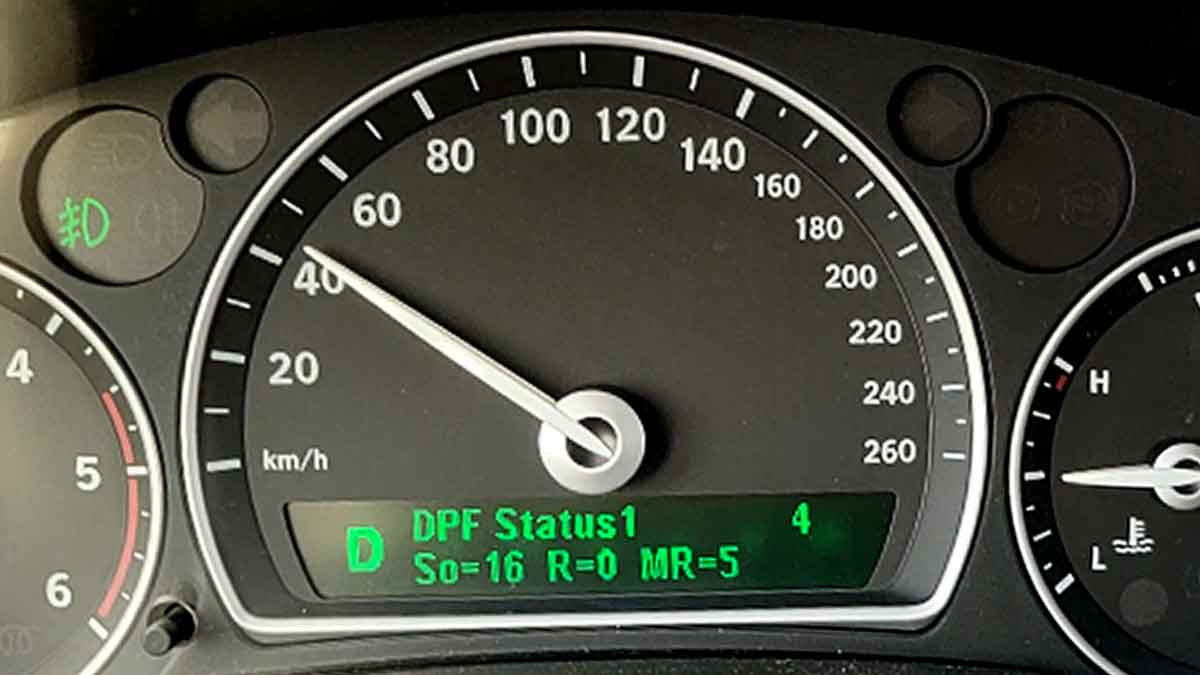
Regeneration Observations on a 2011 Saab 9-3 TTiD with an Automatic Transmission
The automatic transmission model presented a different challenge, with concerns that Sport mode might not adequately support regeneration. However, real-world experience showed that regeneration could initiate at lower RPMs, debunking myths that high-speed driving is required. The eSID3 played a crucial role in monitoring the process, ensuring successful completion without the need for excessive speed.
Transitioning from the manual transmission Saab 9-3 TTiD to its automatic counterpart presented a unique set of challenges and observations regarding Diesel Particulate Filter (DPF) regeneration. The automatic transmission’s tendency not to reach 3000 RPMs as readily as in manual mode raised initial concerns about its ability to effectively initiate and complete the DPF regeneration process. This section delves into the experience of managing DPF regeneration in a Saab 9-3 TTiD with an automatic transmission, offering insights that challenge conventional wisdom and highlight the capabilities of the eSID3 diagnostic tool.
Initial Concerns and Observations
The prevailing advice on numerous Saab forums suggested that DPF regeneration typically initiates when soot levels reach approximately 90%, with newer models reportedly starting the process at around 80%. However, practical experience with the eSID3 plugged into the Aero Sedan TTiD painted a slightly different picture. With the soot level at 75%, anticipation grew around whether the threshold for regeneration would align with the expected 80% mark.
The Regeneration Process Unfolds
Contrary to expectations, the regeneration process kicked off at a soot level of 78%, a revelation that would have remained unknown without the eSID3’s detailed monitoring capabilities. The process began under ordinary urban driving conditions, with engine RPMs fluctuating between 1200 and 2200—a far cry from the frequently cited need to maintain 3000 RPMs on a highway to ensure successful regeneration.
Insights Gained from Automatic Transmission Regeneration
After approximately ten minutes of driving, the passive regeneration process reached completion. The soot level in the DPF dramatically dropped to 16%, while the temperature at the DPF’s inlet and outlet gradually reduced from around 600 degrees Celsius to a more typical range of about 200 degrees. This experience effectively dispels the myth that high-speed highway driving is the only way to facilitate DPF regeneration. It demonstrates that even with lower RPMs, associated with standard urban driving conditions, the Saab 9-3 TTiD’s DPF system can effectively regenerate.
The Role of Forced Regeneration
In cases where passive and active regenerations are insufficient, forced regeneration becomes necessary. This process involves using diagnostic tools to initiate regeneration, increasing the temperature to effectively clear the DPF. However, with proper monitoring and understanding of the regeneration process, forced regeneration can often be avoided.
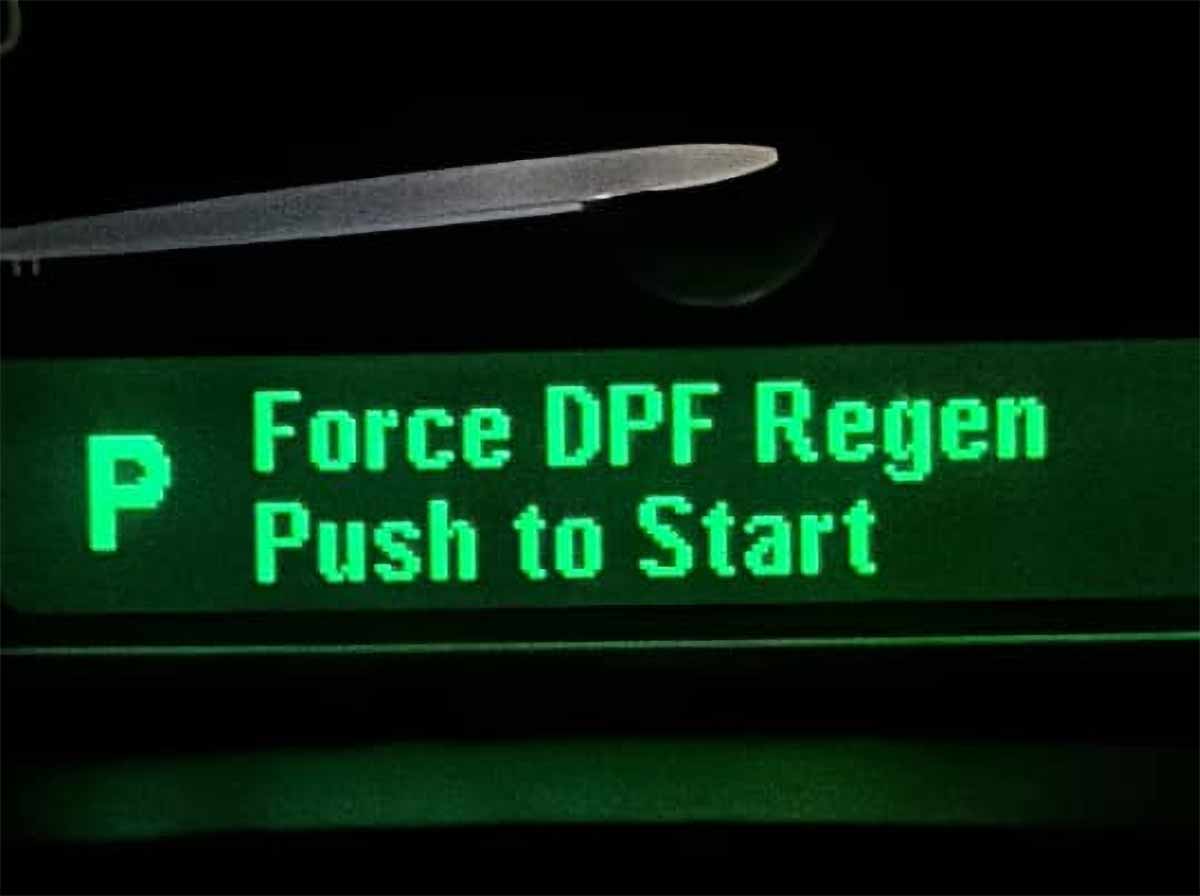
Conclusion
The journey through the complexities of DPF regeneration in Saab diesel vehicles highlights the importance of understanding and monitoring the process. The advent of diagnostic tools like the eSID3 has revolutionized the way owners manage DPF health, offering a proactive approach to maintenance.
The simplicity and effectiveness of the eSID3 in managing DPF health raise questions about why such a system was not factory integrated into the SID by Saab. This tool not only provides invaluable insights into the DPF’s status but also empowers owners to take proactive steps in maintaining their vehicle’s emissions system. The ability to monitor soot levels, temperature, and differential pressure in real time, coupled with the visualization of the regeneration process, enhances the driving and ownership experience, ensuring the longevity and efficiency of the Saab diesel engine’s emission control system.
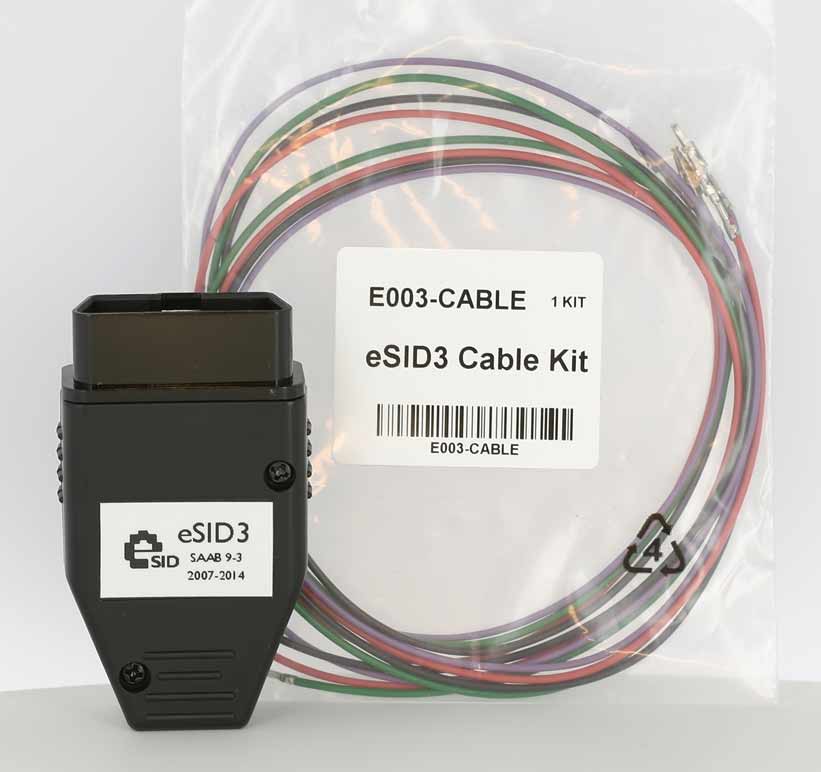
It reaffirms that DPF regeneration can be efficiently managed with the help of diagnostic tools, providing valuable feedback that guides drivers through the process without the need for drastic measures. This insight is particularly reassuring for automatic transmission vehicle owners, offering a methodical approach to maintaining their vehicle’s emission system without undue stress or inconvenience.
By sharing these insights and experiences, we aim to empower Saab diesel vehicle owners with the knowledge to ensure optimal performance and longevity of their DPF systems.

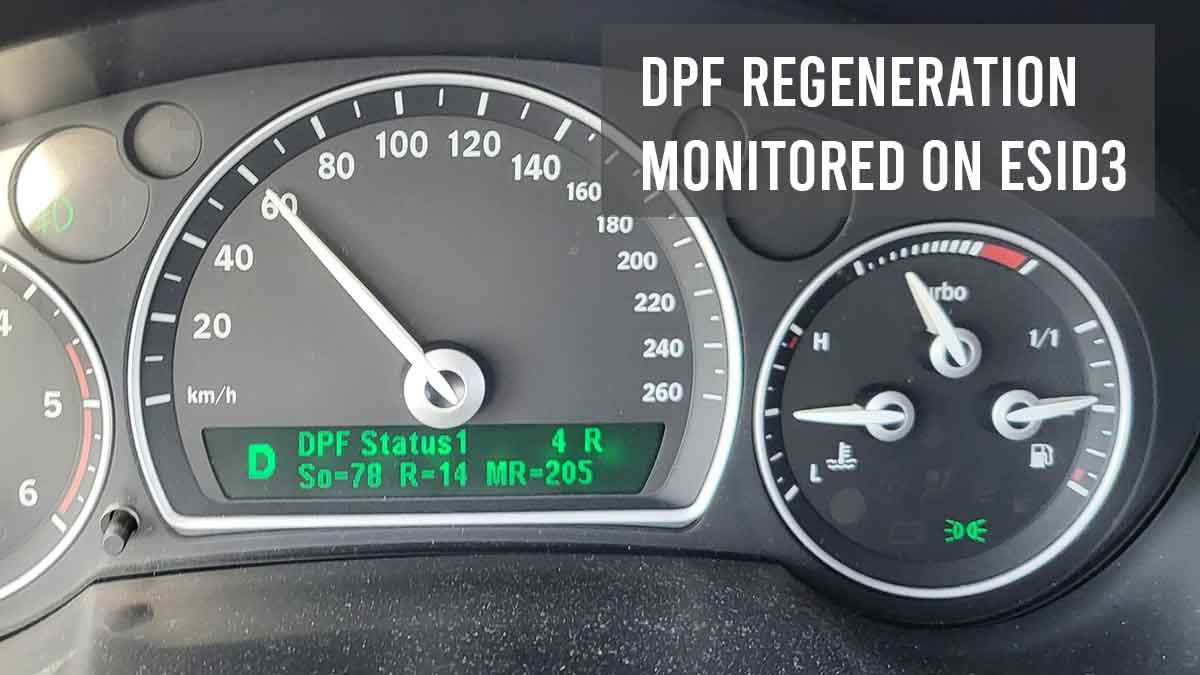






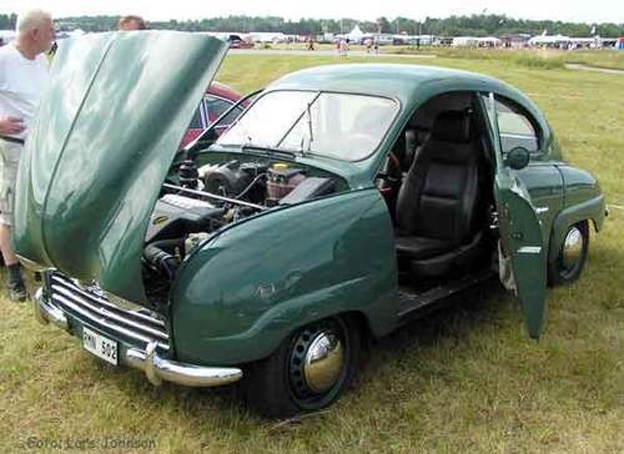



Interesting but is it only for 9-3 diesel and not for the same engined 9-5 diesel?
So this is true for all Saab modern diesels.
Hi Richard,
I have a 9-5 TiD SW MY 2009 (150000km). Here, in France, the MOT is required every two years and last summer my car barely made it through. Exhaust polution level was way too high.
Since I’ve had the car (2012), I’ve encountered 1901 errors and ‘limp mode’ situations. My mechanic said the regeneration would work if i pushed the revs above 3500 rpm for at least 15 minutes. I’ve tried that, and also adding ‘regeneration’ liquid, but to no avail.
So last october (another 1901 error and ‘limp’), I decided to do something about it:
First, I cleaned out the EGR and the intake pipe. It had always seamed like a tricky operation, but it is in fact very straight forward. A few bolts and a connector. Scrape the soot out with a screwdriver or something equivalent. The result was very impressive: it didn’t solve the DPF problem, but the engine had a much more stable tick-over and sounded much better.
Secondly, I tried to find companies that do DPF regeneration using specific products (like hydrogen…) with the exhaust in place. It didn’t seem convincing so I finally (upon the excellent advice of a friend) went for a solution with a company that removes the DPF from the car and ‘cleans’ it completely. No high temperature operation or sophisticated liquids. They simply rince the DPF and empty all the soot. The result was astounding !! More power, more torque, very pleasant accelerations, very smooth driving and, last but not least, lower fuel consumption (-10 to 15 %). No more 1901 error… It did cost me 300 euros, but it was worth every penny.
I hope my experience can help others. In my case, I spent a lot of time trying to find an explanation / solution to the DPF problem until now.
Take care of yourself and your SAABs,
John Young
eSID9-5 supports OG9-5 2006-2010
Do you know whether it is also possible to determine the ash content (not soot) or the end of life of the particulate filter?
Hi Frank, I have the eSid3 on my TTiD Aero and can confirm that it does NOT give a reading of ash level or end of life.
Thank You very much for This Info, very helpful, i have eSID3,its perfect 👍
For the typical Saab owner this is utterly pointless and potentially dangerous. Instead of normal driving and driving to suit the surroundings the driver is now concentrating on driving to cater for a re gen. Thousands of Saab’s being driven every day not running with DPF issues are proof enough this gadget at best is for the over zealous enthusiast. If Saab didn’t give the SID info it’s because they didn’t believe it necessary or safe.
What is the forced method, .I’ll mist deisrls you usually run for 10 minutes or so at 3ooo rpm to clear a dpf? Does a a 93 require special codes etc to do it?